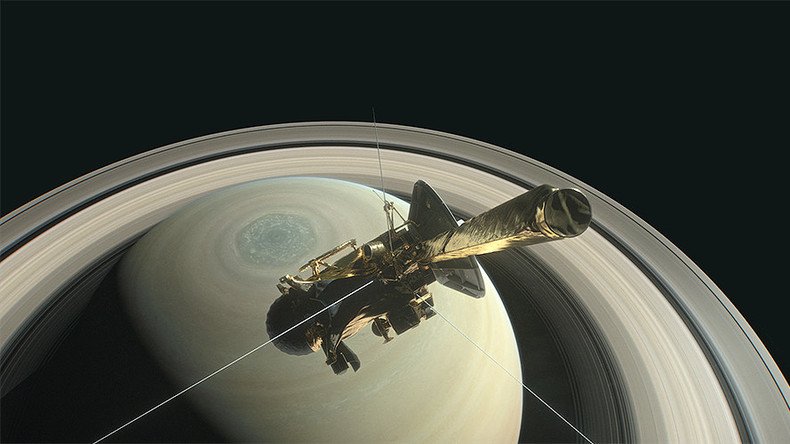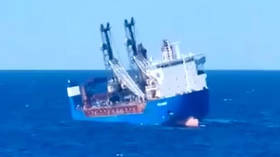Grand finale: Cassini begins dramatic dive between Saturn’s rings

NASA’s Cassini spacecraft has begun its first ever dive between the rings of Saturn. The probe is expected to beam images back to earth when it resumes contact with mission control.
The subject of a joint exploration mission with the European Space Agency (ESA) and the Italian space agency (ASI), Cassini has been orbiting the ringed planet since 2004.
This is it! Through the gap between #Saturn and its rings. Instruments are on, but we're out of contact with Earth. Here we goooooo! pic.twitter.com/3J7aRZS0IH
— CassiniSaturn (@CassiniSaturn) April 26, 2017
Shields Up! As we pass over #Saturn, we're turning our high-gain antenna into a shield RIGHT NOW to deflect oncoming ring particles. pic.twitter.com/kAxzY53uwT
— CassiniSaturn (@CassiniSaturn) April 26, 2017
On Wednesday, the craft made its first move in a final exploratory mission before it’s intentionally incinerated in the gaseous atmosphere of Saturn this September.
READ MORE: Titan’s labyrinth: NASA captures complex terrain of Saturn’s moon (PHOTOS)
Using its dish-shaped antenna as a shield against potentially damaging space particles, the Cassini plunged through the gap between Saturn and its rings.
It has been temporarily out of contact with experts back in NASA due to the protective use of its antenna. NASA says it’s likely to regain contact no earlier than 07:00 GMT on April 27, with its first images to be received a short time later, if all goes to plan.
According to a NASA timeline for the journey, as Cassini crosses Saturn’s ring plane it will collect data using its Radio and Plasma Wave Science instrument that is so sensitive it can pick up the impact of minute dust particles touching off the spacecraft.
READ MORE: Earth from a billion miles away: Cassini captures mind-blowing image (PHOTO)
With its power now in decline, Cassini is expected to carry out a number of dives in the previously unexplored region, before it is left to float into Saturn’s atmosphere and burn up on September 15.
The ‘grand finale’ destruction of Cassini will “satisfy planetary protection requirements” and leave no contamination to other planets, according to the ESA.
“At last, we have now reached the final and most audacious phase of this pioneering mission, pushing the spacecraft once again into unexplored territory,” said ESA Cassini scientist, Nicolas Altobelli. “We are looking forward to the flow of exciting new data that Cassini will send back in the coming months.”
Our last close views of Titan, #Saturn’s largest moon, are coming down. Next? Our #GrandFinale! https://t.co/SRQwxe1ptPpic.twitter.com/nMenuiYdnb
— CassiniSaturn (@CassiniSaturn) April 24, 2017
Launched in 1997, Cassini has captured thousands of incredible images of Saturn’s atmosphere and nearby moons. These images have included photos of methane clouds swirling above the planet and water vapor coming from the moon Enceladus.












